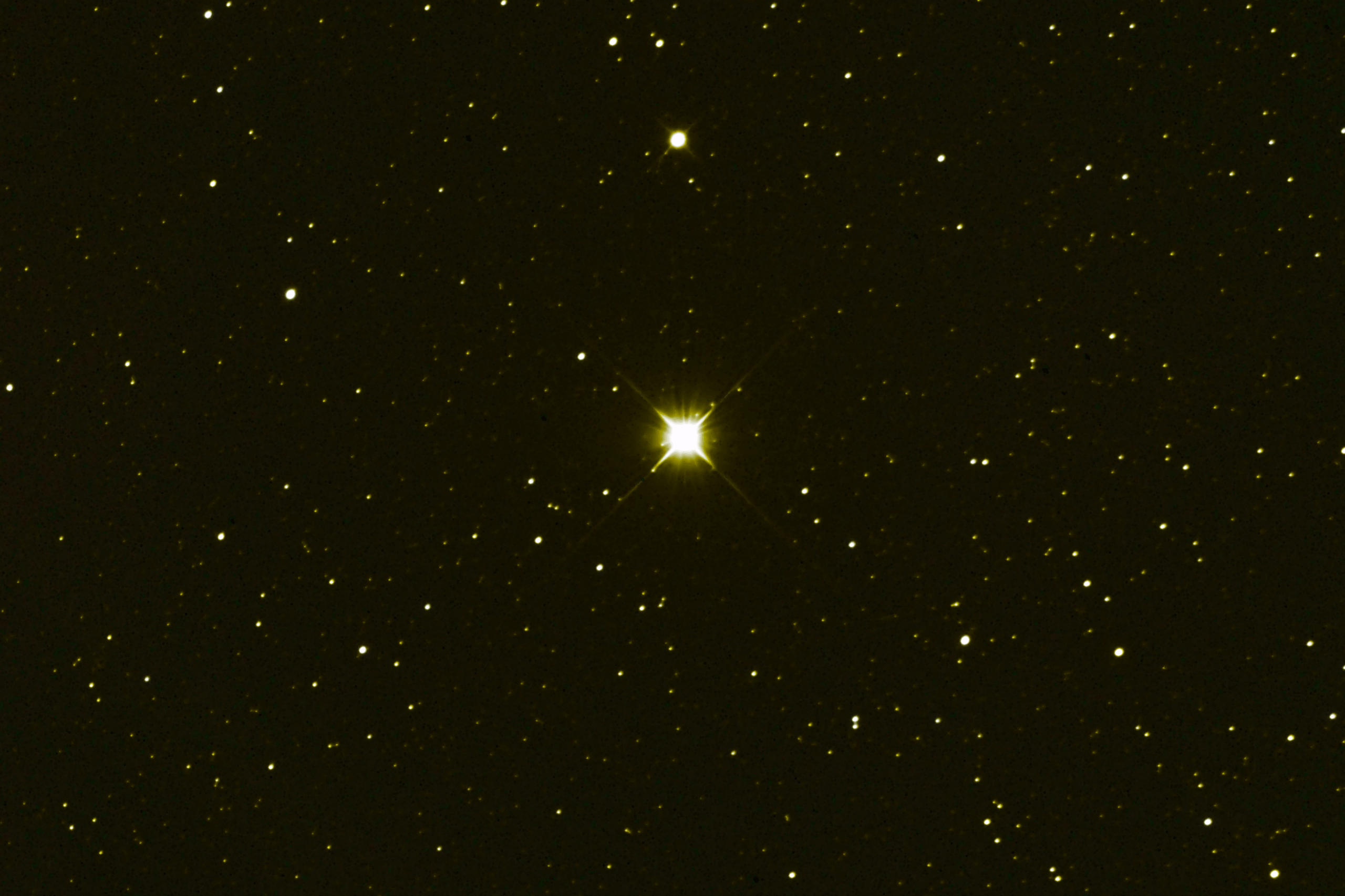
Object: RS Ophiuchi (RS Oph) is a recurrent nova system approximately 5,000 light-years away in the constellation Ophiuchus. In its quiet phase it has an apparent magnitude of about 12.5. It has been observed to erupt in 1898, 1933, 1958, 1967, 1985, 2006 and 2021 and reached about magnitude 5 on average. A further two eruptions, in 1907 and 1945, have been inferred from archival data. The recurrent nova is produced by a white dwarf star and a red giant in a binary system. About every 15 years, enough material from the red giant builds up on the surface of the white dwarf to produce a thermonuclear explosion. The white dwarf orbits close to the red giant, with an accretion disc concentrating the overflowing atmosphere of the red giant onto the white dwarf.
On August 8, 2021, the Fermi Gamma Ray Space Telescope corroborated optical observations made by K. Geary of a new outburst associated with RS Oph, with an estimated visual magnitude of 5.0. It reached a peak visual magnitude of approximately 4.6 the following day. (The lower the magnitude number, the brighter the object)
The first image was taken on August 11, 2021, shortly after the explosion. When I presented this image, I intended to come back a month later to see if it had diminished in brightness. On September 9, 2021, I took the second image and put them into this animated gif file. You can see the star is much less bright.
Taken: September 9 and August 11, 2021
Telescope: Astro-Tech 14” RC with Starizona Apex-ED L 0.65x focal reducer
Mount: Paramount ME II
Camera: ZWO ASI2600MM-Pro (cooled to 0C; Gain 100) Bin 1×1.
Guiding: ZWO ASI290MM-Mini with ZWO M68 Off-Axis Guider (OAG)
Focuser: Moonlite Nitecrawler
Rotator: Moonlite Nitecrawler
Filters used: Chroma Luminance, Red, Green, Blue filters with a ZWO 7-position Electronic Filter Wheel (EFW)
Exposures: For September 9: 10×120 seconds Luminance; 10×120 seconds Red; 10×120 seconds Green and 10×120 seconds Blue for a total exposure time of 1.33 hours; calibrated with 40 dark frames, 40 flat frames with 40 dark-flats.
Seeing Conditions:
Image capture and telescope control: Sequence Generator Pro and TheSkyX Pro with a SkyShed POD MAX observatory.
Processed with PixInsight, Photoshop CC 2021